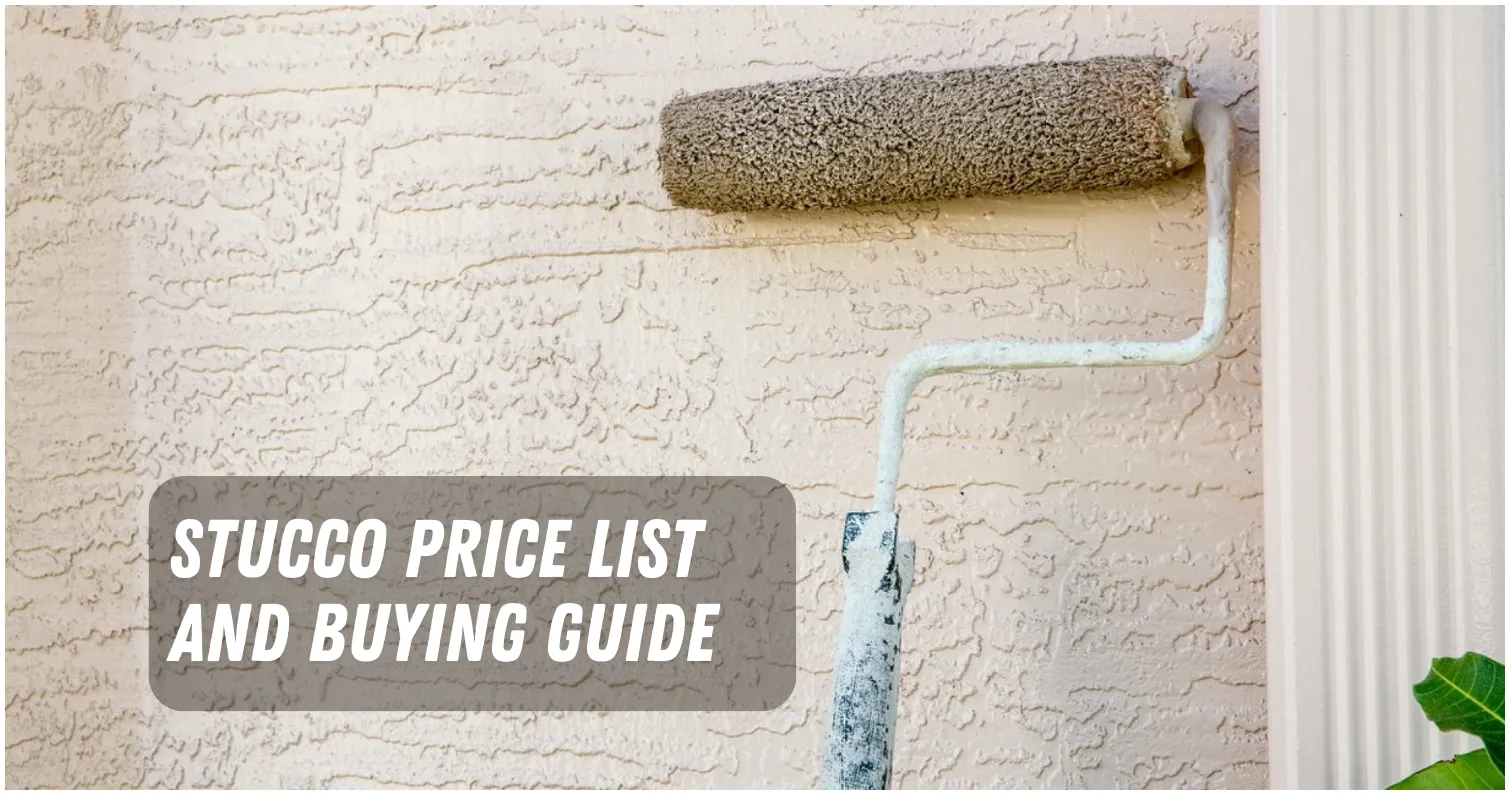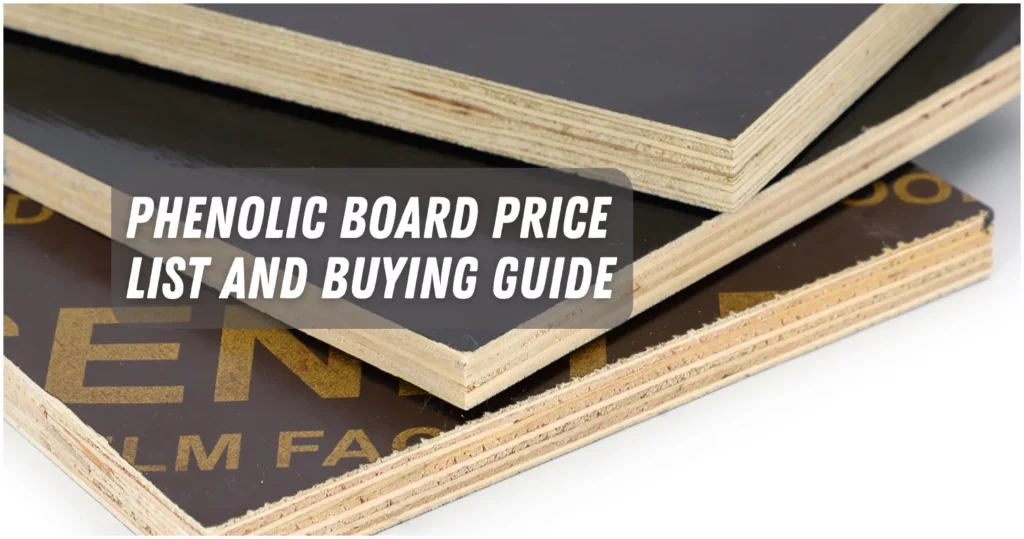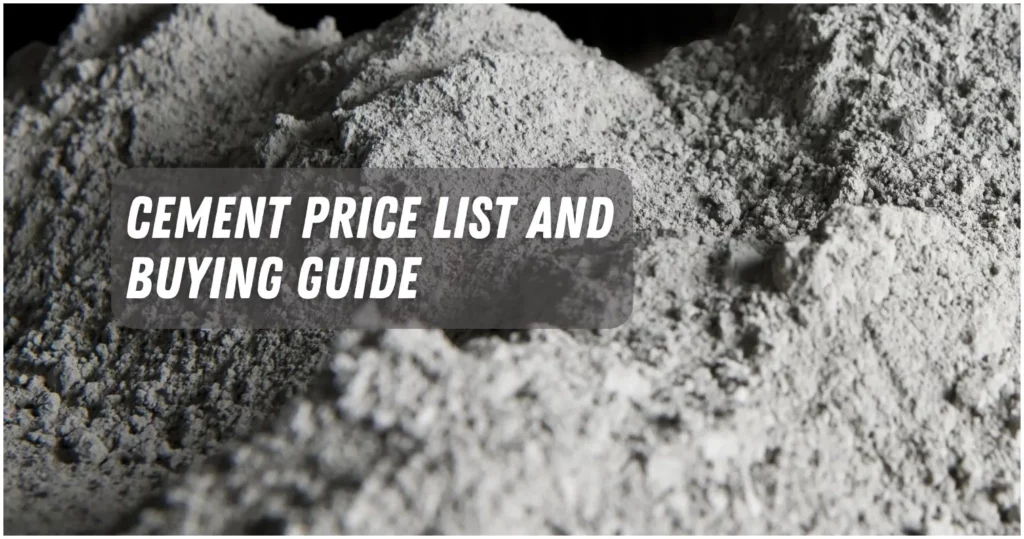Stucco is a versatile material that can be used for many different things for a reasonable price.
It can be used on surfaces inside and outside. Also different techniques and materials can be used to make different finishes and textures.
Cement plaster is another name for stucco. It is made from sand, Portland cement, lime, water, and other things that make it last longer and work better.
This article will tell you everything you need to know about the price of stucco in the Philippines, which is usually between ₱200 and ₱2,000.
What is Stucco and What are its Uses

Stucco is a type of plaster that can be used to cover and decorate walls, ceilings, floors, and other things like:
- Finishing: You can use stucco to make smooth or rough surfaces on walls, ceilings, and floors. It can also be colored or painted to fit any design or color scheme.
- Protection: Stucco can protect the building beneath it from water, fire, insects, mold, and weather damage. It can also help a building keep heat in and keep out noise.
- Decoration: Stucco can be shaped and patterned in different ways to make art or architectural features. It can also be mixed with pigments or additives to make different effects, like metallic, marble, or stone.
Stucco Uses

This type of material can be used for various types of buildings and structures, such as:
- Residential: Stucco can be used to finish and decorate houses, apartments, condos, townhouses and villas. It can create a cozy, elegant or modern look depending on the style and color chosen.
- Commercial: Stucco can be used to finish and decorate offices, shops, restaurants, hotels, malls and other commercial establishments. It can create a professional, inviting or trendy look depending on the theme and branding.
- Industrial: Stucco can be used to finish and protect factories, warehouses, workshops and other industrial facilities. It can create a durable, functional or aesthetic look depending on the purpose and requirement.
Type of Stucco

There are two main types of stucco available in the market:
- Traditional Stucco:
Traditional stucco is made of sand, portland cement, lime, and water. It is the older and more common type. Put on in three layers and allowed to dry and get wet to keep it from cracking. Finished by troweling, floating, or spraying. - Synthetic Stucco:
Synthetic stucco is a newer type made with polymers and acrylic resin. Applied in one or two layers on top of foam board or mesh. No need to dry or moisten. Finish with spraying, rolling, or brushing.
Stucco Price List
The price of stucco depends on several things, such as the type, brand, amount, and place where you buy it.
According to some online sources, here are some estimated price for stucco per bag (20 kg) in Philippines:
| Type | Brand | Price |
|---|---|---|
| Traditional | Republic | ₱200 |
| Traditional | Holcim | ₱220 |
| Traditional | Cemex | ₱240 |
| Synthetic | Stuc-O-Flex | ₱1,500 |
| Synthetic | Parex | ₱1,800 |
| Synthetic | Sto | ₱2,000 |
The price per square meter of stucco depends on a number of things, such as:
- Thickness: The more stucco there is, the more material it takes and the more it costs.
- Texture: The surface of stucco needs more material and costs more if it has more texture.
- Labor: The cost of labor goes up the more skilled and experienced the workers who put up stucco are.
Here are some estimated prices per square meter for stucco in the Philippines, including the cost of labor:
| Type | Thickness | Texture | Labor | Price |
|---|---|---|---|---|
| Traditional | 10 mm | Smooth | ₱200 | ₱300 |
| Traditional | 15 mm | Rough | ₱250 | ₱400 |
| Synthetic | 5 mm | Smooth | ₱300 | ₱500 |
| Synthetic | 10 mm | Rough | ₱350 | ₱600 |
Difference Between Stucco, Plaster and Concrete
Stucco, plaster, and concrete are all types of cement-based materials used to cover and decorate surfaces.
But there are some differences in how they are made, how they are used, and how they look.
| Property | Stucco | Plaster | Concrete |
|---|---|---|---|
| Composition | Sand, Portland cement, lime, and water | Gypsum, water, and additives | Gravel, sand, Portland cement, and water |
| Application | Applied in layers over a wire mesh or lath | Applied in layers over a paper or metal backing | Poured into a mold or formwork |
| Appearance | Can have different textures and finishes | Makes a smooth surface that can be painted or covered with wallpaper | Makes a solid, hard surface that can be polished or stained |
Advantages and Disadvantages of Stucco

Stucco has some advantages and disadvantages compared to other types of wall coverings. Here are some of them:
Pros:
- Durable: Stucco can last for decades if it is taken care of properly. It will not break, chip, dent, or scratch. It can also stand up to the elements, fire, bugs, mold, and mildew.
- Versatile: Stucco can be used for various types of buildings and structures. It can also create different textures and finishes depending on the technique and materials used.
- Aesthetic: Stucco can enhance the appearance and value of a building. It can also match any color scheme or design preference.
Cons:
- Expensive: Stucco can be more expensive than other ways to cover walls. To use it, you need more materials, more work, and more time. To keep its look, it also needs to be cleaned and painted regularly.
- Difficult: Stucco can be difficult to apply and fix. It takes skilled and experienced workers who know how to mix, apply, and finish stucco. To work with stucco, you also need special tools and equipment.
- Cracking: There are many things that can cause stucco to crack, such as bad installation, low-quality materials, too much water, changes in temperature, or structural movement. Stucco can lose its strength and look if it gets cracks.
Things You Should Know About Stucco
Before you decide to use stucco for your project, here are some things you should know about it:
- Why is stucco used?
Stucco is used because it is cheap, lasts a long time, and can be used to give your walls different looks and effects. - Can I apply stucco to concrete?
Yes, you can put stucco on concrete as long as you clean, roughen, and prime the surface properly. You should also use a glue or a mesh to make sure the pieces stick together. - Is stucco cement waterproof?
No, stucco cement by itself is not waterproof. To protect it from water damage, you should use a waterproofing agent or sealant. - What material is used for stucco?
Stucco is made from a mix of sand, cement, lime, water, and other things that make it strong, flexible, and resistant to the effects of weather. - How long will stucco last?
Stucco can last for decades if it is put up correctly and taken care of. But it can also get worse over time because of things like weather, quality, design, and use.
If you are looking for stucco price in Philippines, you should compare different suppliers and products to find the best deal for your budget and needs.
[ratings]

